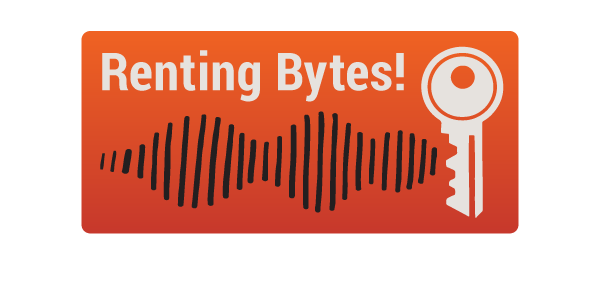Responding to tenancy issues under COVID‑19
Joel Pringle • 07/08/2020
This piece was originally published in Parity, Australia's national homelessness publication.
In the National Association of Tenants’ Organisations (NATO) submission to the Senate Select Committee on COVID‑19’s inquiry into the Australian Government’s response to the COVID‑19 pandemic, member organisations encourage State and Territory Governments to implement reporting and monitoring mechanisms for their policy responses to the impact of the health and economic crisis on tenants.
Consistent with this call, the Tenants’ Union of New South Wales (TUNSW) has recognised the need to best attempt our own monitoring, within the resourcing and access to data limitations that we have.
The submission states that State and Territory reporting and monitoring:
‘would help ensure the prompt, appropriate identification of Covid‑19 impacts in relation to renting households, and evaluation of any measures introduced to address these. Appropriate monitoring also allows for timely consideration of what further response/s are required, especially once moratoriums and associated protections are lifted.’
The TUNSW identified that while government is best resourced and placed to fulfil this function — and there is good will towards these principles in some sections of government — the lack of data sharing and transparency across government in New South Wales (NSW) as a whole creates a risk of inaction. The need remains for agents outside of government to collect, compile and analyse the best available data to complement the call on governments.
The TUNSW does not have access to the same reporting and other data available as the NSW Government.
Upon review, reporting provided by Tenants Advice and Advocacy Program (TAAP) services was identified as the best data available to the TUNSW for monitoring the impacts of COVID‑19 on tenants, though with certain limitations.
The TAAP database contains case notes from Tenant Advocates, providing insight into the profile of issues that are leading tenants to seek support from the TAAP services. As such, it relies on a relatively small sample – those tenants who contact the services for support. The data collection tool used by Tenant Advocates provides limited flexibility in how they can record case information. In moments of crisis we expect there might be new or specific issues that arise, but current reporting is not designed for identifying emerging issues that tenants might be facing. This is appropriate for the database’s primary purpose, which is regular reporting and monitoring in regular times.
Within these limitations, the TAAP database can still provide some picture of how COVID‑19 is affecting tenants and the effectiveness of the NSW Government’s policy response.
The reporting for the quarterly period impacted by COVID‑19 falls in July, which will include the April to June period showing the impacts on tenants and the effectiveness of the NSW Government’s tenancy policy response.
To complement this analysis, and to address the challenges outlined above in relying on the TAAS reporting, a survey is being run with tenants’ advice services to capture their observations on the impacts of COVID‑19 on their clients that the reporting does not otherwise allow.
Survey collection is currently being finalised, but some of the themes are already clear. In NSW services are hearing from tenants that landlords have been ignoring requests to negotiate rent reductions from COVID impacted tenants, or delaying responses. They have been offering rent deferrals rather than the reductions as required under the protection framework, and in many cases are deciding for themselves that tenants who meet the definition of ‘impacted tenants’ are not eligible. Too many landlords have not been negotiating in good faith as required under the law, and too many landlords have been using harassment to pursue rental arrears while refusing to participate in rent negotiations with COVID‑19 impacted tenants.
The NSW Government, in its tenancy protection policy response, assumed landlords will participate in good faith negotiations because it is in their long-term interest. This has not been borne out in practice.
Eviction notices have been served to tenants for rental arrears, in spite of the evictions moratorium. No grounds eviction notices are being served to tenants, and landlords are using COVID‑19 as a reason to defer repairs and maintenance.
This work will be provided to the sector and to the NSW Government, in order to influence any further protections that might be required and to assist the design of the reporting and monitoring that others are undertaking. Further, this project has been used to guide the ongoing TUNSW monitoring and analysis of the TAAP data to inform TUNSW’s policy advocacy on behalf of tenants in NSW and with our colleagues nationally.
Various jurisdictions have been holding their own parliamentary inquiries into their government’s handling of the COVID‑19 crisis. These inquiries have had varying focus and Terms of Reference, but they share timelines that make it difficult for community representatives to provide meaningful evidence and input, and report while the impacts of the crisis are ongoing. The risk is that without the ability to view and consider evidence, the inquiries have limited contribution to assessing and improving the tenancy (and other) implications of the COVID‑19 crisis.
The COVID‑19 crisis has had policy makers on the run. Having had our tenancy laws tested and shown to fail in crisis, perhaps the biggest learning is we need a more responsive legislative framework. This could be through legislated crisis protection frameworks that are ready to be implemented across affected regions or communities when health, economic or natural disaster crisis hits. It could also be achieved through improving our tenancy laws generally, to ensure that before any eviction can take place all relevant circumstances are considered, and when a crisis hits (a household, a community) appropriate mechanisms for adjusting rents are in place so impacted households can afford to stay in their homes
For more info on renting in NSW during COVID-19, see our Renters' Guide to COVID-19.





